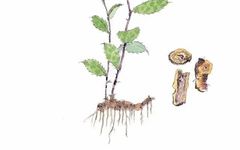To get straight to the point, today I want to talk about Cang Zhu (Atractylodes).
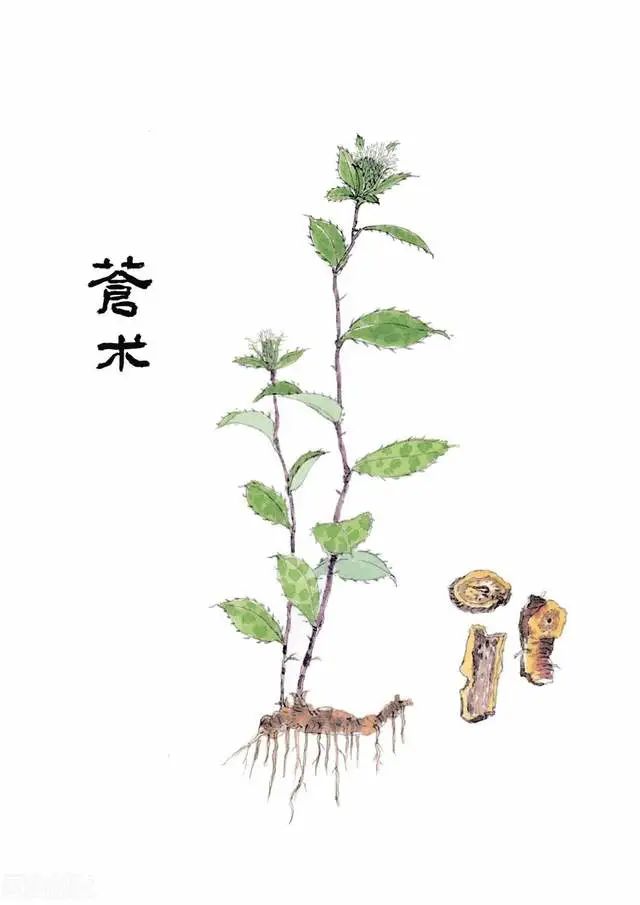
Cang Zhu (Atractylodes)
When it comes to Cang Zhu (Atractylodes), many people might find it unfamiliar, but Bai Zhu (White Atractylodes) is well-known, right?
It is important to note that Bai Zhu (White Atractylodes) and Cang Zhu (Atractylodes) have similar effects. In fact, thousands of years ago, the ancient Chinese herbal text, the Shen Nong Ben Cao Jing (Shen Nong’s Classic of Materia Medica), did not differentiate between Bai Zhu and Cang Zhu. It simply referred to “Zhu” as a superior medicine. It was not until the Southern and Northern Dynasties period that Tao Hongjing made a distinction in his Ben Cao Jing Ji Zhu (Commentary on the Classic of Materia Medica), stating that Chi Zhu (Red Atractylodes) has fine, unbranched leaves and a small, bitter root with much resin, which refers to Cang Zhu. Later, the name Cang Zhu began to be used in the Zheng Lei Ben Cao (Classified Materia Medica).
High-quality Cang Zhu is primarily produced in Jiangsu, Hubei, and Henan provinces, and is also known as Mao Cang Zhu (Hairy Atractylodes). Cang Zhu prefers a cool climate, is resistant to cold and drought, and typically grows in loose, fertile sandy soil. Therefore, you can often find Cang Zhu on hillsides, in shrubs, and in some dry lands.
So, what medicinal properties does this small herb Cang Zhu possess? Let’s take a few minutes to explore:
Abdominal Distension
We often say that we live in an age of excessive nutrition, especially during festive seasons when lunch is barely finished before dinner is served, and the sight of a table full of dishes can leave one feeling bloated and without appetite.
This is mainly due to overindulgence in spicy, rich foods, which suddenly increases the burden on the spleen and stomach, leading to an inability to transform and transport food, causing the accumulation of dampness in the middle jiao (the central region of the body), resulting in abdominal distension and loss of appetite.
Additionally, modern lifestyles often involve little physical activity, with many people sitting idly scrolling through their phones or watching funny videos, leading to stagnation in the spleen and stomach, and the generation of phlegm-dampness.
At this time, using some Cang Zhu can be beneficial, as it primarily enters the spleen and stomach meridians, effectively drying dampness and transforming phlegm in the spleen and stomach. By resolving the phlegm-dampness that is obstructing the middle jiao, the symptoms of abdominal distension can be alleviated.

Cang Zhu (Atractylodes)
Diarrhea
Continuing on, we just discussed how the essence of food can accumulate in the spleen and stomach, making it difficult to transport to the five zang and six fu organs, and these essences always seek an outlet.
Moreover, the dampness generated within the body is fundamentally water, which tends to move downward, making it easy for these essences to exit from below, leading to symptoms of spleen deficiency and diarrhea.
Ultimately, spleen deficiency diarrhea is caused by the accumulation of phlegm-dampness in the middle jiao, and thus, Cang Zhu can also be used to improve this condition.
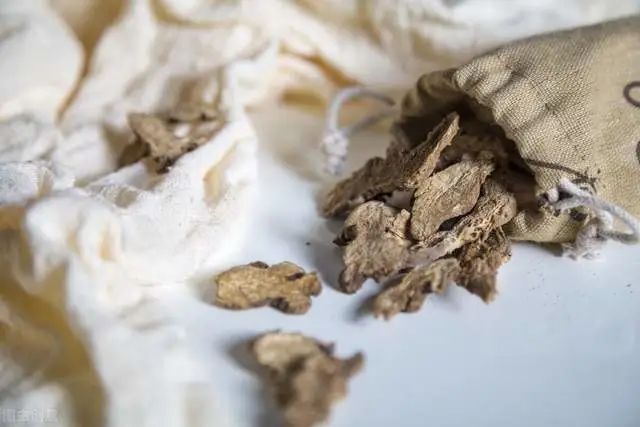
Cang Zhu (Atractylodes)
Edema
As people age, various parts of the body are prone to edema.
The main reason is that as a person ages, the body’s yang qi gradually weakens. It is important to understand that yang qi has a warming and promoting effect, assisting the normal circulation of qi, blood, and body fluids. If yang qi is insufficient, the movement of qi, blood, and body fluids will inevitably slow down, leading to local stagnation and resulting in edema over time.
Cang Zhu is spicy, dispersing, and warming, capable of transforming and dispersing stagnant water and dampness within the body. Its warming nature also helps to nourish yang qi, making it a commonly used herb for treating edema due to physical decline.

Cang Zhu (Atractylodes)
Wind-Damp Bi Pain
Traditional Chinese Medicine (TCM) believes that diseases are primarily caused by the invasion of external pathogens. These pathogens are mainly classified into six types: wind, cold, summer heat, dampness, dryness, and fire.
Notice that wind is listed first, which is why ancient texts often state that wind is the leader of all diseases. External pathogens can hitch a ride on wind to invade the human body; in simple terms, wind acts as a carrier for diseases, making it essential to guard against.
Additionally, dampness must also be vigilantly guarded against. Why? Because dampness is particularly sticky, clinging to our organs, muscles, and bones, making it difficult to eliminate completely.
Thus, you may notice that some people experience joint pain, neck and shoulder pain, or lower back pain when it rains. This is precisely because wind and dampness have taken advantage of the opportunity to invade, and dampness, being a yin pathogen, is most active in cold, damp weather.
It is important to understand that when wind-dampness invades our body, it stagnates our qi and blood, leading to poor circulation, which results in pain. The ancients referred to this as “bi pain,” where “bi” means blockage, indicating that the qi and blood are obstructed, leading to muscle and joint pain.
Cang Zhu has a spicy and warming nature, which can disperse and eliminate wind pathogens, cutting off the source of disease; its warming and drying properties can also expel dampness. With the removal of wind-dampness, qi and blood can flow freely, alleviating bi pain.

Cang Zhu (Atractylodes)
Head and Body Pain
Recently, the weather has turned quite cold, and in addition to guarding against dampness, cold pathogens also require attention.
Many people catch colds during this transitional season due to exposure to cold and wind, with cold pathogens invading the head or affecting the entire body.
It is important to note that cold pathogens easily damage the body’s yang qi, causing qi and blood to lose warmth, leading to slow circulation, which can eventually result in qi stagnation and blood stasis, causing pain.
Therefore, using some Cang Zhu here serves two purposes: to dispel wind and to scatter cold.
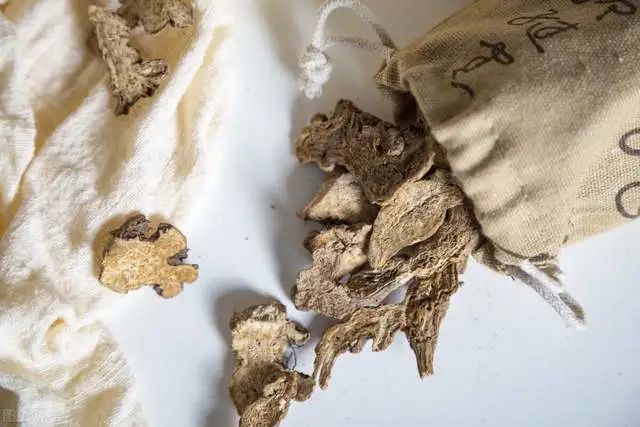
Cang Zhu (Atractylodes)
Night Blindness
Additionally, Cang Zhu has the effect of improving vision and is commonly used to treat night blindness.
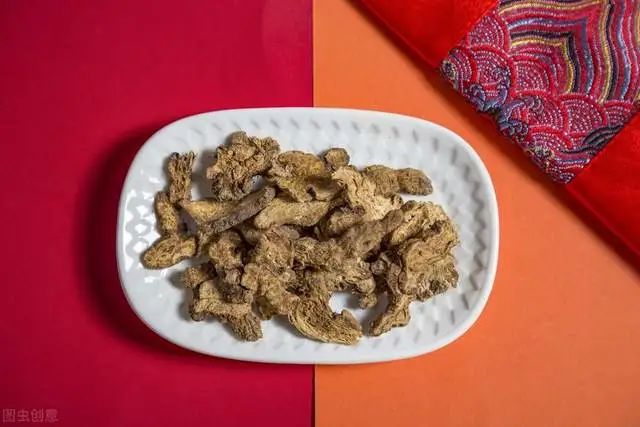
Cang Zhu (Atractylodes)
Fragrant and Purifying
Cang Zhu has a fragrant aroma and can purify foul odors. It is commonly used during the Dragon Boat Festival to burn Cang Zhu and Ai Ye (Mugwort) indoors to ward off epidemics.
Modern pharmacological studies have shown that this method can indeed inhibit and kill viruses and bacteria. Therefore, Cang Zhu has also been widely used in the prevention and treatment of COVID-19. The National Health Commission and the State Administration of Traditional Chinese Medicine have included Cang Zhu in the treatment protocols for COVID-19, such as the initial cold-damp obstructing the lungs formula, the mid-stage epidemic toxin obstructing the lungs formula, and preventive formulas released by the Hubei Health Commission and the First Affiliated Hospital of Guangzhou Medical University, all of which heavily utilize Cang Zhu. In the external application methods for preventing COVID-19 (fumigation or sachets), the Traditional Chinese Medicine Diagnosis and Treatment Manual for COVID-19 includes external formulas for preventing COVID-19 (indoor fumigation or ground into powder to make sachets) and also emphasizes the use of Cang Zhu and Ai Ye for indoor fumigation.

Cang Zhu (Atractylodes)
As this article comes to a close, some may wonder why the effects of Cang Zhu and Bai Zhu seem very similar.
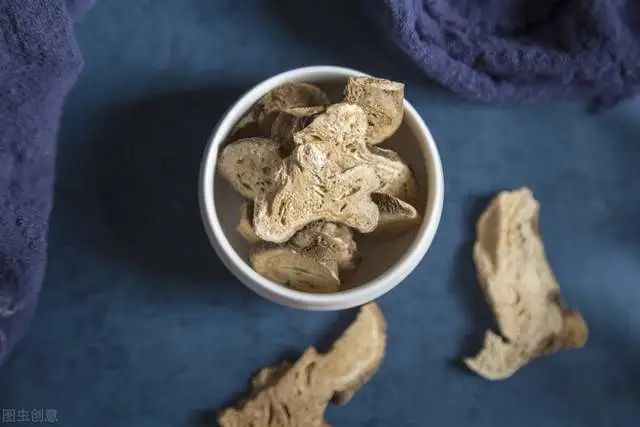
Bai Zhu (White Atractylodes)
It is essential to remember that Bai Zhu strengthens the spleen and dries dampness, while Cang Zhu dries dampness and strengthens the spleen.
Furthermore, although Cang Zhu has many beneficial effects, it is not suitable for everyone.
It is important to note that Cang Zhu is spicy and drying, which can easily damage fluids and deplete body fluids; therefore, those with yin deficiency and dry heat should use it with caution.

